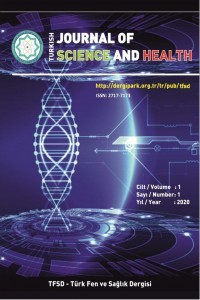Assessment of risk factors to predict the duration of tachypnea in the management of infants hospitalized with transient tachypnea of newborns.
Assessment of risk factors to predict the duration of tachypnea in the management of infants hospitalized with transient tachypnea of newborns.
___
- Alhassen, Z., Vali, P., Guglani, L., Lakshminrusimha, S., & Ryan, R. M. (2021). Recent Advances in Pathophysiology and Management of Transient Tachypnea of Newborn. Journal of Perinatology, 41(1), 6–16. https://doi.org/10.1038/s41372-020-0757-3
- Blickstein, I., & Green, T. (2007). Umbilical Cord Blood Gases. Clinics in Perinatology, 34(3), 451–459. https://doi.org/10.1016/j.clp.2007.05.001
- Bozkaya, D., Yiğit, Ş., & Yurdakök, M. (2019). Is serum procalcitonin level a reliable indicator in early diagnosis of congenital pneumonia? Turkish Journal of Pediatrics, 61(1), 34–39. https://doi.org/10.24953/turkjped.2019.01.006
- Çakan, M., Nalbantoǧlu, B., Nalbantoǧlu, A., Demrsoy, U., & Say, A. (2011). Correlation between transient tachypnea of the newborn and wheezing attack. Pediatrics International, 53(6), 1045–1050. https://doi.org/10.1111/j.1442-200X.2011.03438.x
- Başlangıç: 2020
- Yayıncı: Ümit Muhammet KOÇYİĞİT
Fatih KILIÇBAY, Gaffari TUNÇ, Gülşah ÜNSAL
Çiğdem GÜN KAKAŞÇI, Dilek COŞKUNER POTUR, Nurdan DEMİRCİ
Fatal Anaphylactic Shock Developed with Walnut and Rosehip
Şimşek ÇELİK, Pelin ÇELİK, Behnan GÜLÜNAY
A Surgeon's Endoscopy Experience
Mustafa Bünyamin KARAGÖZOĞLU, Feyza Nur ÇETİN
Emrullah DÜNDAR, Emine Nur ÇORUM
Investigation of COVID-19 Fear and Related Factors of Mothers with Children Between 2-6 years Old
